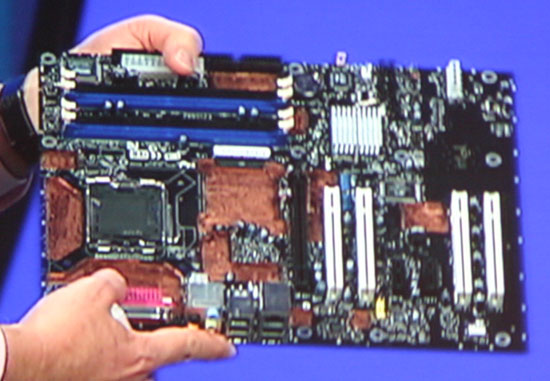NTMBK
Lifer
- Nov 14, 2011
- 10,487
- 5,910
- 136
Both Atoms and Bobcat allows 3rd party IP. Its standard business.
Not heard that about Atom before- any articles/conference calls about that? I'm aware that there are Atoms shipped with on-package stuff (like FPGAs), but not heard anything about integrating it into the die.
Macbooks will not have ARM chips. ARM is so horrible slow it hurts. Not to mention that Apple said OSX and IOS will never merge.
They don't have to merge for there to be OSX on ARM. As for ARM performance- Apple are designing their own cores, and there's no reason why they couldn't make a high performing core aimed at a laptop thermal envelope instead of tablet envelope. (I'd imagine this would happen several years down the line, if it does at all, but its definitely a possibility.)
Apple also wants performance and supply guarantee. Something AMD cant offer. Haswell backed by Intels fabs is exactly what Apple desires.
Apple wants enough graphics performance to power retina displays satisfactorily- that will be the big factor deciding whether the next Macbook Air uses Haswell or not. Supply guarantee does remain a major concern for AMD though.
Jaguar is very slow, Trinity is slow. None of the IGPs is enough if one excludes the other. How fast does a low power Trinity run again? Are we talking the 17W A6-4455M? The 2.1Ghz 1M/2T 2MB cache chip with 256 SP at 327Mhz? Remember Haswell offers a single chip solution in that segment instead of a 2 chip solution.
Yeah, Trinity's thermal draw mostly puts it out of the running. As for Jaguar- we've not seen it, we don't know how slow it's going to be. 10W Jaguar would be the highest end of its power range, so you'd be seeing it with 4 cores, plenty of graphics, and good clock speeds. But how will Haswell's graphics do when squeezed down to a 10W part?
Don't forget, a lot of the promised Haswell power improvements at the ultra-low-power end are due to them specifying things to their partners that will reduce total platform power draw, and as Anand points out Apple has been doing this for themselves for a long time. Don't expect the power reductions in Apple-land to be as major as they are in Windows-land.








